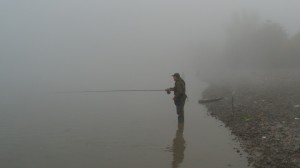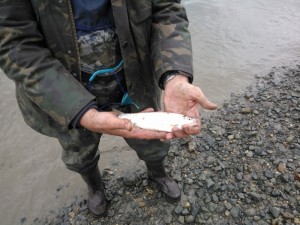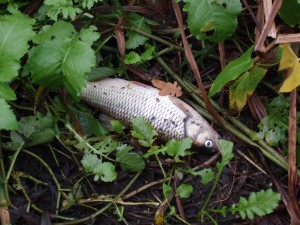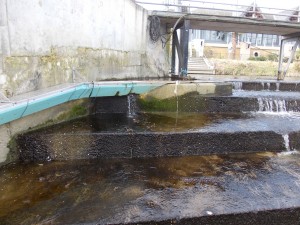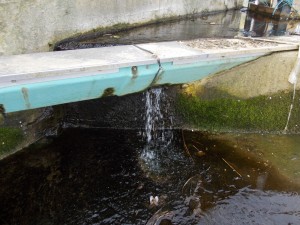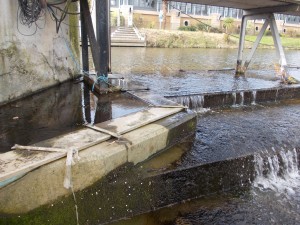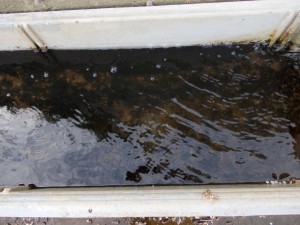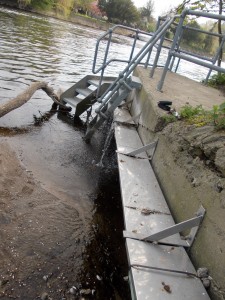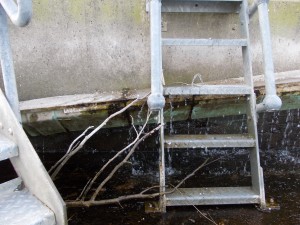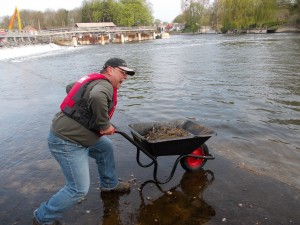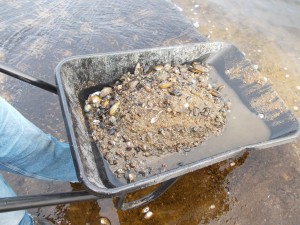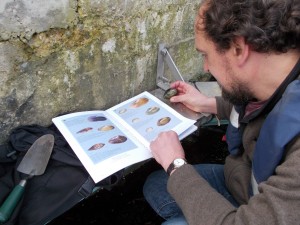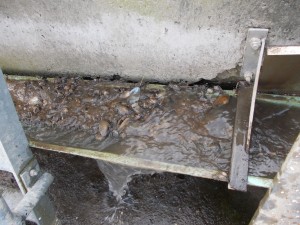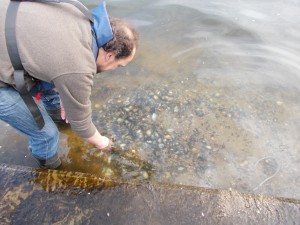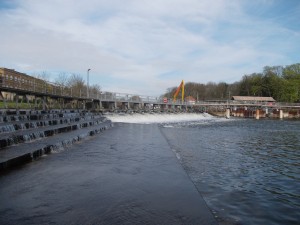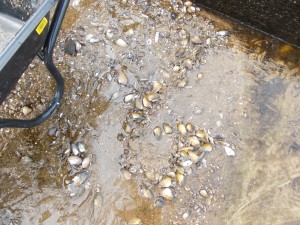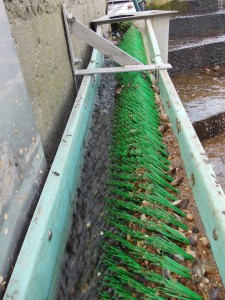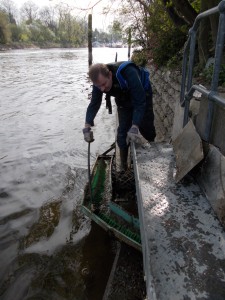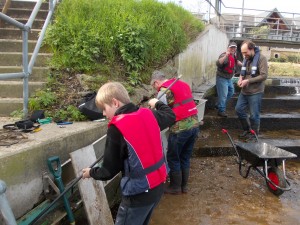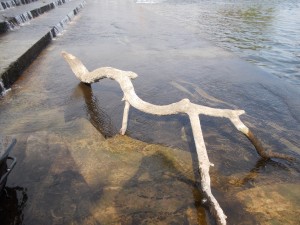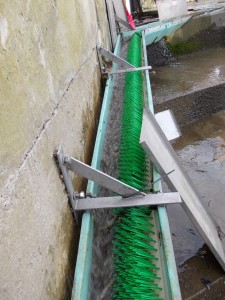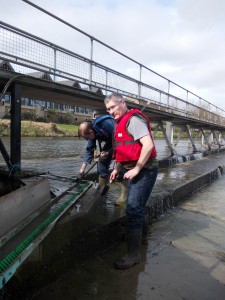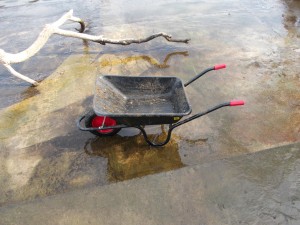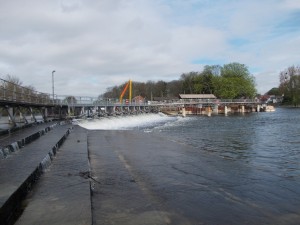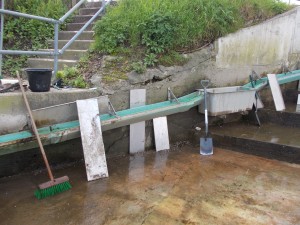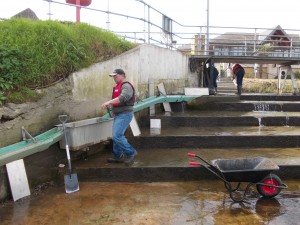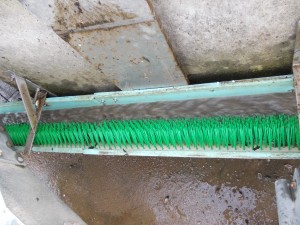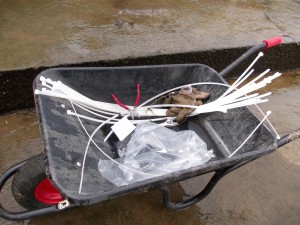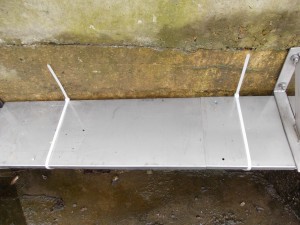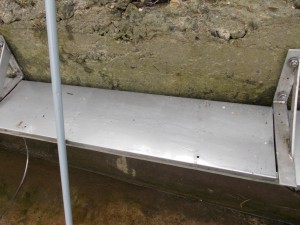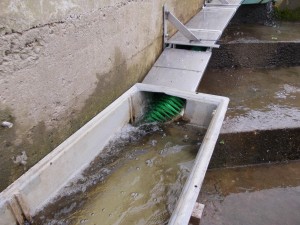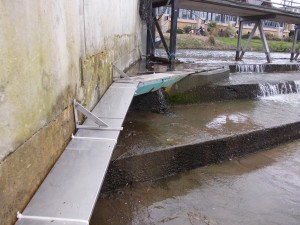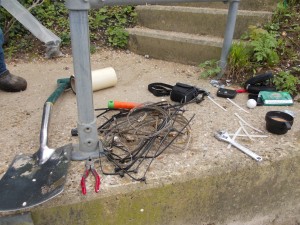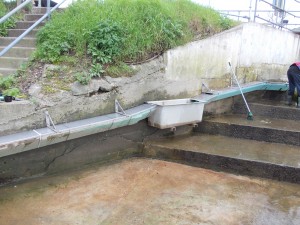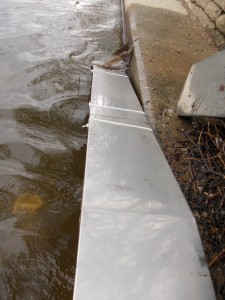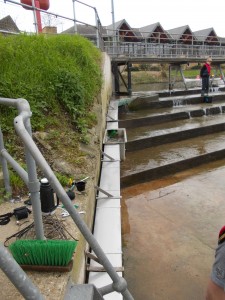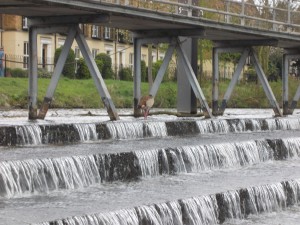-
- Buy a UK rod licence: EA Link
- 0800 807060 EA Hotline, Pollution, Poaching
- Thames Region River Levels
- Thames River Conditions
- Thames Temps and Clarity
- Thames Fishing Byelaws
- Thames Annual Tidefest
- Thames Record List
- Thames Eel Monitoring
- EA Annual Fisheries Report
- EA Flood Warnings
- Thames Sewage Discharge Notifications
- Thames Sewage Events
- Thames Tideway Tunnel
- River Thames Scheme: Reducing flood risk from Datchet to Teddington
- Martin Salter: Fighting for Fishing Blog
- Duncan Charmans World of Angling Blog
- Angling Trust
- Water and sewerage companies in England: environmental performance report 2013 – 2016
- EA Pollution incidents: 2014 evidence summary
- EA Pollution incidents: 2015 evidence summary
- River Crane and DNR Fisheries Impact assessment
- Links
Recent Tweets
Error retrieving tweetsNews Archive
Thames Water fined £250,000 for polluting Newbury’s Chase Brook
Posted in News
Tagged Environment Agency, Fish KIll, Pollution, WFD
Comments Off on Thames Water fined £250,000 for polluting Newbury’s Chase Brook
Koi herpesvirus (KHV) disease outbreak confirmed in Somerset
11th July 2014
An outbreak of KHV disease has been confirmed at Plantations Lakes, Middle Lane, Kingston Seymour, Clevedon, Somerset. The site is now subject to statutory controls to prevent or limit the spread of the disease. The Fish Health Inspectorate (FHI) at Cefas, acting on behalf of Defra has issued a confirmed designation prohibiting the movement of fish to, from and within the fishery complex.
Fishery equipment disinfection and movement control measures are also now in place and anglers must ensure that they comply with all biosecurity measures within the designated area. The fishery owners voluntarily closed the affected water as soon as the disease problems began and reported the problem for further investigation. KHV has no implications for human health. It is nonetheless, a serious viral disease of fish, and is notifiable in the United Kingdom. KHV affects all varieties of common and ornamental carp (Cyprinus carpio) including carp hybrids and can result in high rates of fish mortalities.
Clinical signs of KHV disease may include white or necrotic patches on the gills, rough patches on the skin, sloughing mucous and sunken eyes. These signs usually appear when water temperatures are between 16 and 28 degrees centigrade. Anyone noting deaths in carp or carp hybrids, with signs of disease similar to those above, or have suspicion of notifiable disease in any aquatic animal, should immediately contact the FHI.
Anyone who imports, keeps, fishes for, or retails carp (common and ornamental) and carp hybrids should take precautions to prevent the spread of KHV. Fish Health Inspectorate Email fhi@cefas.co.uk Monday to Friday, 9am to 5pm 01305 206700 Additional notes Cefas is an executive agency of the Department for Environment, Food and Rural Affairs (Defra). The Fish Health Inspectorate (FHI), based at Cefas’ Weymouth laboratory, is dedicated to maintaining and improving fish and shellfish health in England and Wales. Its primary role is to act for Defra and Welsh Government (WG) in undertaking statutory and inspection duties resulting from the EU fish health regime and other national legislation in the area of fish and shellfish health.
The FHI is responsible for health certification of fish and shellfish movements from other countries, and runs an enforcement programme aimed at preventing the illegal importation of these animals. Koi herpesvirus (KHV) is a notifiable disease under The Aquatic Animal Health (England and Wales) Regulations 2009. Outbreaks of this disease have been subject to statutory control in GB since 2007. CD07/2014, issued under the Aquatic Animal Health, England and Wales Regulations 2009 restricts the movement of any live fish, including their eggs and gametes, into, out of or within the designated area without the prior written consent of the Fish Health Inspectorate at Cefas and applies additional specific biosecurity measures.
Posted in News
Tagged Environment Agency, Fish KIll
Comments Off on Koi herpesvirus (KHV) disease outbreak confirmed in Somerset
Tidefest – Thames Tideway Angling Competition
The Angling Trust and Thames Angler’s Conservancy are pleased to announce the establishment of an annual angling competition to take place as part of the new TideFest event in London, which this year coincides with World Rivers Day on September 28th.
The match, which is sponsored by the Thames Tideway Tunnel project, has a first prize of £500 and is expected to attract some of the top river anglers in the area. It is being held on the gravel foreshore downstream of Kew Bridge, an area that has thrown up some big bags of bream, roach and dace in club competitions in recent years.
As well as providing an exciting contest the match will also be helpful in assessing the health of the tidal Thames now that the once problematic sewage works upstream at Mogden has had a multi million pound upgrade. TideFest is a celebration of the recreational importance of London’s River and will involve a range of other activities designed to get people out and enjoying what the Thames Tideway has to offer. TideFest is a partner of Totally Thames – formerly the Mayor’s Thames Festival.
Match Details
50 peg Thames Tideway Angling Competition with £500 First Prize plus pools and trophy
Date and Time: Sunday September 28th. 8am – 1pm
Draw: 7am Strand on the Green, Kew Bridge London W4 3RE
Tickets: £5 , cheques made payable to the Angling Trust, with proceeds to the young persons angling charity Get Hooked on Fishing
Contact: Ron’s Tackle, 465 Upper Richmond Rd West, London SW14 7PU Tel: 020 8876 4897.
Or email sandra.drew@anglingtrust.net
The groups involved in organising TideFest include the London Wildlife Trust, Thames Angler’s Conservancy, Thames 21, The River Thames Society and the Angling Trust. Other activities planned include foreshore walks, river dipping, sailing, kayaking and walks along the Wandle Way and possibly some young persons angling tuition on the River Wandle.
Sky TV presenter and Thames specialist Keith Arthur backed the event saying: "I have fished the full tidal river for 40 years and it continues to improve despite regular pollutions, something the Tideway Tunnel will eliminate. Unfortunately I won't be able to attend on the day but those who do can expect bream to 8lb and more, possibly on the stick float too, a couple of rod lengths out. This section of river has produced carp to 38lb, barbel in double figures and huge bags of dace and roach. I confidently predict there will also be rainbow and sea trout caught, especially if there is extra water on the river. It will be a genuine eye-opener."
Dave Harvey, Chairman of TAC said: "The tidal Thames can be a fantastic fishery with Bream, Roach, Dace regularly being caught along with many other species. Add in sea fish such as small Flounder and Bass and this match will be a very special event. With the Tideway Tunnel now at the planning stage, it will give us a glimpse of just how good the river will become. Fishing a tidal river is a challenge and TAC members are really looking forward to it."
Angling Trust Campaign Chief Martin Salter added:
“Following the success of last year’s RiverFest the Angling Trust is delighted to be continuing attract match anglers back to river fishing whilst at the same time highlighting the importance of cleaning up London’s river. We’ve got a great cash prize for the winner and will also be raising money to support the fantastic work of Get Hooked on Fishing that does so much to help youngsters get into our sport.”
Posted in News
Tagged Angling Trust, Fish, Fishing, Martin Salter, Super Sewer, Thames Water, Tideway Tunnel
Comments Off on Tidefest – Thames Tideway Angling Competition
Anglian Water to pay £94,000 for polluting more than 4K of an Essex Brook
Anglian Water has been fined £50,000 after sewage contaminated a brook through an emergency overflow pipe killing more than 1,500 fish.
All 3 pumps at Ingrave Pumping Station, near Brentwood, Essex had failed in the early hours of Sunday 10 April 2011 and sewage polluted more than 4 kilometers of the Haverings Grove Brook.
A variety of fish species died including bullhead, stoneloach, minnow, stickleback, chub, dace and gudgeon. Many of these species were spawning at the time, so it is likely that the incident had a significant impact on reproduction.
The company was also ordered to pay a contribution towards Environment Agency costs of £44,736 and a victim surcharge of £15.
The Environment Agency brought the prosecution against Anglian Water, who entered late guilty pleas to breaching 2 conditions of their environmental permit at Chelmsford Magistrates’ Court yesterday (Thursday 19 June 2014).
Breached permit
The permit authorises Anglian Water to discharge sewage to the brook via the emergency overflow pipe in the event of emergency. However, the permit also contains telemetry conditions which apply in the event of an emergency overflow, 2 of these conditions were not complied with.
Mr Mark Watson, prosecuting for the Environment Agency, said: “There was a pattern of failure to respond appropriately to alarms and telemetry data in the run up to 10 April 2011.”
At the time of the incident, there were 3 pumps at Ingrave Pumping Station. One a day stopped working over 3 days but no alarms were set off. At one point this left the pumping station with no operational pumps for 12 hours.
Mr Watson said: “It is clear that at some point after midnight, in the early hours of 10 April 2011, a discharge of crude sewage from the emergency overflow commenced. However, no emergency overflow alarm was ever generated or received”.
Gross pollution
Ms Sarah Le Fevre, Defence Counsel, said Anglian Water deeply regretted the incident and took some comfort from the scale of the company’s operation with their telemetry system representing one of the largest in Western Europe.
At the time of the incident, they were not aware that the wet well alarm was not designed to activate if the pump station was running on the back-up system. Various remedial and precautionary actions have been taken since the incident.
Speaking after the case, Environment Agency officer Peter Cooke said: “This pollution was reported to us by a member of the local community who found the brook grossly polluted with sewage.
“It had a catastrophic impact on fish and was distressing for local residents who value the brook for its diverse wildlife. After the incident Environment Agency officers were faced with the unpleasant task of removing over 1500 dead fish from the brook, including a significant number of bullhead, a Biodiversity Action Plan species and important food fish for kingfishers and herons.’’
Offences
On or about 10 April 2011, at Ingrave Pumping Station, Middle Road, Ingrave, Essex, you being the holder of Environmental Permit number ASENF/1109B, failed to comply with Condition 2.8.2 of the said Permit in that you failed to provide and maintain a 24 hour response telemetry alarm system to give notification in the event of operation of the emergency overflow.
Contrary to Regulation 38(2) of the Environmental Permitting (England and Wales) Regulations 2010. Fined £25,000.
On or about 10 April 2011, at Ingrave Pumping Station, Middle Road, Ingrave, Essex, you being the holder of Environmental Permit number ASENF/1109B, failed to comply with Condition 2.8.1(b) of the said Permit in that you failed to take all reasonable remedial measures to return the pumping station to normal operation as soon as practicable after receipt of warning of failure or breakdown of the pumping station.
Contrary to Regulation 38(2) of Environmental Permitting (England and Wales) Regulations 2010. Fined £25,000.
Posted in News
Comments Off on Anglian Water to pay £94,000 for polluting more than 4K of an Essex Brook
Severn Trent Water fined £10,000 for pollution in Nottinghamshire
On Tuesday 24 June 2014, Severn Trent Water pleaded guilty at Nottingham Magistrates’ Court to one charge of pollution in Nottinghamshire. They were fined £10,000, ordered to pay £2,659.63 in costs, along with a £15 victim surcharge.

The charge was brought by the Environment Agency contrary to Regulation 38(2) and 12(b) of the Environmental Permitting (England and Wales) Regulation 2010. On 12 March 2012, Environment Agency officers attended an incident on the Potwell Dyke watercourse in Southwell, Nottinghamshire. The incident was reported by Severn Trent Water who said that water pollution had discharged into the watercourse from their combined sewer outfall. Under the terms of their environmental permit consent, Severn Trent Water were permitted to discharge into the Potwell Dyke but only during storm conditions, when flows in the overflow exceed 15 litres per second. This is to protect the downstream properties from the risk of flooding during a storm. At the time of the pollution report weather conditions were dry.
On attendance officers went to the footpath just off Halloughton Road, where it was possible to see the outfall to the Potwell Dyke from Severn Trent Water’s combined sewer overflow. There was no flow from the outfall at that time, but officers observed debris around the outfall and solids on the bed of the watercourse. The water flowing down the Potwell Dyke from upstream of the outfall showed no visible signs of pollution. When officers looked at Potwell Dyke from the footbridge, downstream of Halloughton Road, the water appeared cloudy. The officers also saw dead fish in the watercourse immediately around the bridge. Both officers continued further downstream to establish how much of the watercourse had been impacted by the pollution. Tests carried out showed that ammonia levels were elevated in places as far as 2km downstream.
On 15 March, Environment Agency officers returned to Southwell and met a representative from Severn Trent Water where they had contractors on site working to remediate the pollution and remove debris from the watercourse. The Potwell Dyke was grey/brown and still appeared cloudy at the sewer outfall. In places a pale scum was visible on the surface of the water. The following day an officer returned to the Potwell Dyke. Severn Trent Water’s contractors were still on site and had placed sandbags in the watercourse to prevent excess solids being carried downstream during the clean up from the culvert.
The watercourse appeared much clearer downstream of the sandbags than upstream.
Speaking after the case, an Environment Agency officer in charge of the investigation said: Although Severn Trent Water reported the discharge to us immediately, it was too late to prevent the pollution of the Potwell Dyke. We do everything we can to protect the environment, local rivers and watercourses. This case sends out a clear message that we will not hesitate to prosecute as necessary when environmental damage is caused. In mitigation, the court took in to account Severn Trent Water’s early guilty plea and said that culpability was low because of their inspection regime and no previous incidents at this location. Severn Trent Water’s response to the incident was adequate; there was remedial action taken and a minimal impact on the ecosystem.
Environment Agency sets out plans for £256m River Thames flood defence scheme
Posted in News
Tagged Environment Agency, Flood, Pollution
Comments Off on Environment Agency sets out plans for £256m River Thames flood defence scheme
Thames Eel pass gets a Spring Clean
Volunteers from the TAC spent a morning cleaning out the Molesey Eel pass and Trap which had beacome blocked after the winter floods.
The trap had beacome full of large amounts of sand, gravel and huge numbers of freshwater shells.
Thanks to everyone who can down to help.
Posted in News
Tagged Eels, Environment Agency, ZSL
Comments Off on Thames Eel pass gets a Spring Clean
Martin Salter – Starting the ‘Season’ with a mixed bag and plans for a Silver King.
Posted in News
Tagged Angling Trust, Fishing, Thames, Thames Water
Comments Off on Martin Salter – Starting the ‘Season’ with a mixed bag and plans for a Silver King.


